© Alexander Gempeler
亚历山大·冈佩勒(Alexander Gempeler)
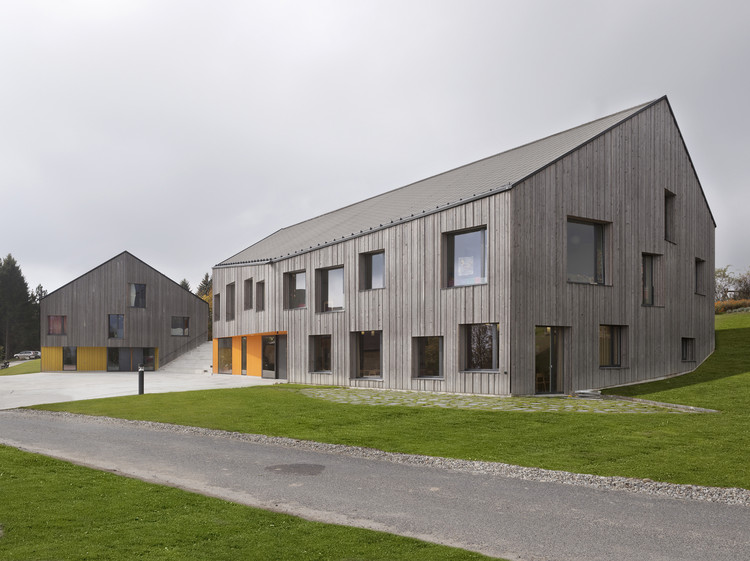
架构师提供的文本描述。La分支机构残疾人之家的不同建筑本身创造了一个小村庄,位于一个可以俯瞰阿尔卑斯山的农村地区。该设施在一个缓缓倾斜的南面地形上,将由多价建筑完成,以一种方式形成村庄的中心。
Text description provided by the architects. The different buildings of the La Branche home for the disabled create a small village in its own right, situated in a rural location with a view of the Alps. The facility on a gently sloping south-facing terrain was to be completed by polyvalent buildings placed in a way to form the village center.
© Alexander Gempeler
亚历山大·冈佩勒(Alexander Gempeler)
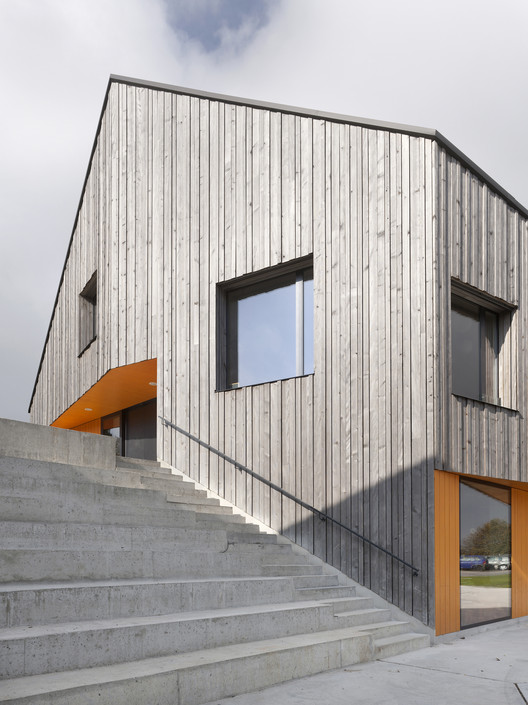
两座新的建筑在三层的中央广场情况。它与附近的大厅和学校的建筑一起,创建了一个会议场所,一个代表该地点中心的村庄广场。楼梯也是一个室外圆形剧场,可以用来表演。为了鼓励联系和交流,现有的街道被移走并转移到村庄中心周围。进入广场的唯一途径是与现有的人行道网络交织在一起的小径。
Lower Floor Plan
低层平面图
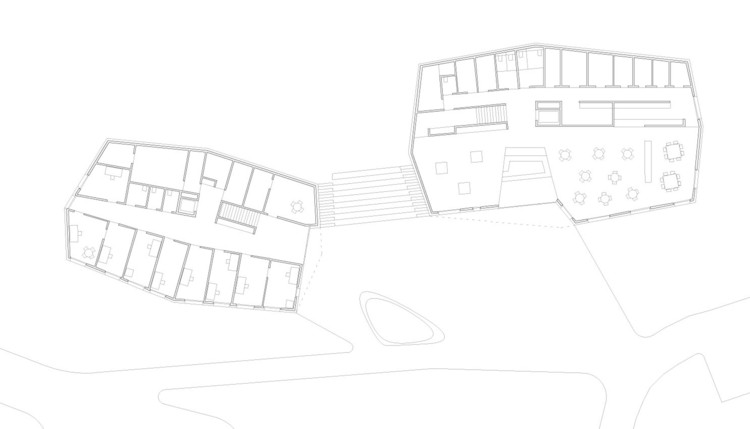
为了保持农村的地形特征,自然的,平缓的地形几乎没有改变。建筑体积作为独立结构插入到绿色区域.它们来自于人类的教导,并出现在一个,多角形,水晶形式。
To retain the rural topographical character, the natural, gently sloping terrain was hardly changed. The building volumes are inserted into the green areas as free-standing structures. They are derived from Anthroposophic teachings and appear in a translated, polygonal, crystalline form.
© Alexander Gempeler
亚历山大·冈佩勒(Alexander Gempeler)
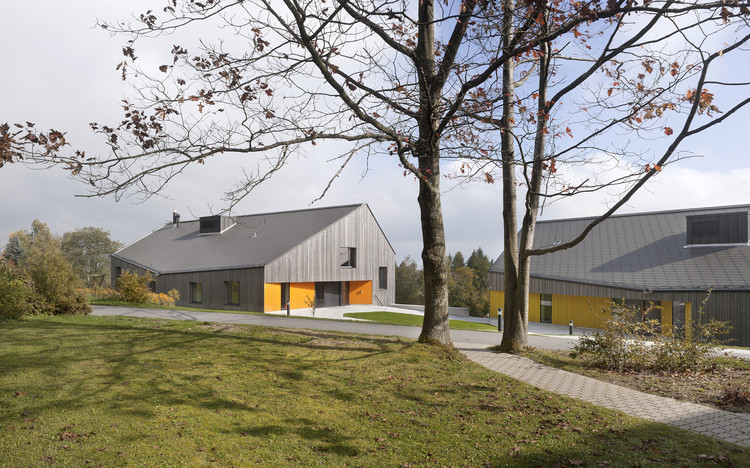
然而,为了打破直接,这些卷都是用垂直结构的木板包覆的。外观是充满活力的,似乎任意使用不同的尺寸,但总是形式上一致的窗口。
To break direct translation, the volumes were however clad in vertically structured wooden boards. The appearance is invigorated through the seemingly arbitrary use of differently dimensioned, yet always formally congruent windows.
Upper Floor Plan
上层平面图

斜坡上的情况允许楼层进入所有的楼层.底层与大广场有着直接的关系,它将商店、餐厅和行政管理的公共职能结合起来。顶层设有治疗室、工作室和治疗面包房,所有这些都可以独立进入上层。
The situation on the slope allows floor-level access to all stories. The lower ground floors, which have a direct relationship with the large square, unite the public functions of the store, restaurant, and administration. The upper ground floor accommodates therapy rooms, studios and the therapeutic bakery, which can all be accessed independently of the upper level.
© Alexander Gempeler
亚历山大·冈佩勒(Alexander Gempeler)
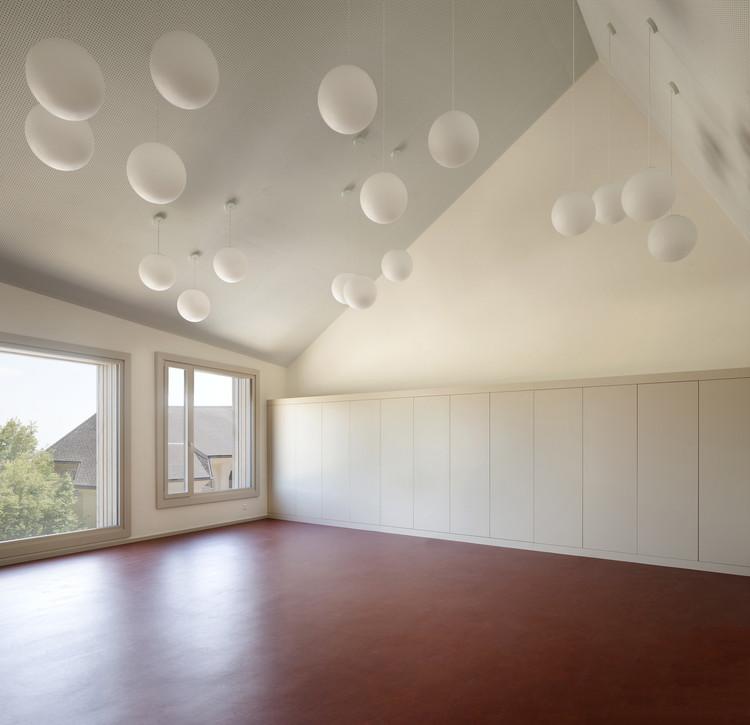
这两座建筑的结构是在生产、销售、管理、治疗和护理等组织领域。由于功能的不同,功能划分是横向的,独立的建筑物是横向的,也是垂直的。建筑物的简单组织考虑到用户所经历的定向和协调困难。
The two buildings are structured in the organizational areas of production, sales, administration, therapy, and nursing. The functional division is both horizontal through the independent buildings and vertical due to the different functions. The simple organization of the buildings takes the orientation and coordination difficulties experienced by the users into account.
© Alexander Gempeler
亚历山大·冈佩勒(Alexander Gempeler)
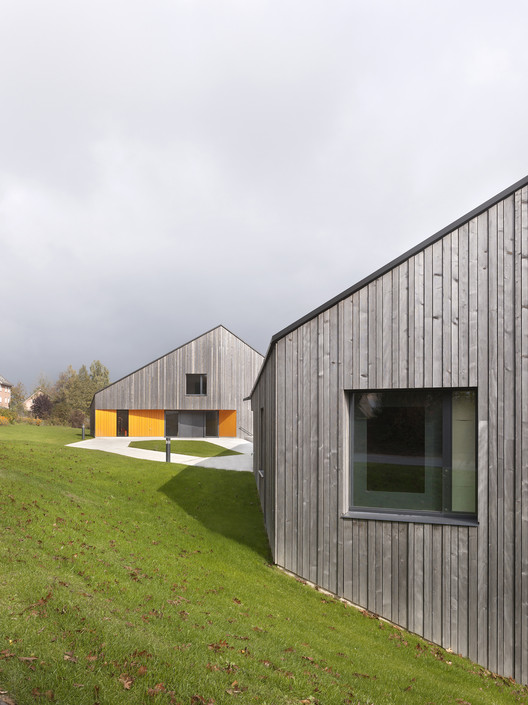
垂直通道与相关入口紧密相连,几乎完全是户外通道的捷径。中央的,略带发号施令的走廊,两端都有自然光连接着每一层的各个房间。
Vertical access is closely connected to the relevant entrances and almost exclusively serves as shortcuts for the outdoor paths. Central, slightly bossed corridors with natural light from both ends connect the individual rooms on each floor.






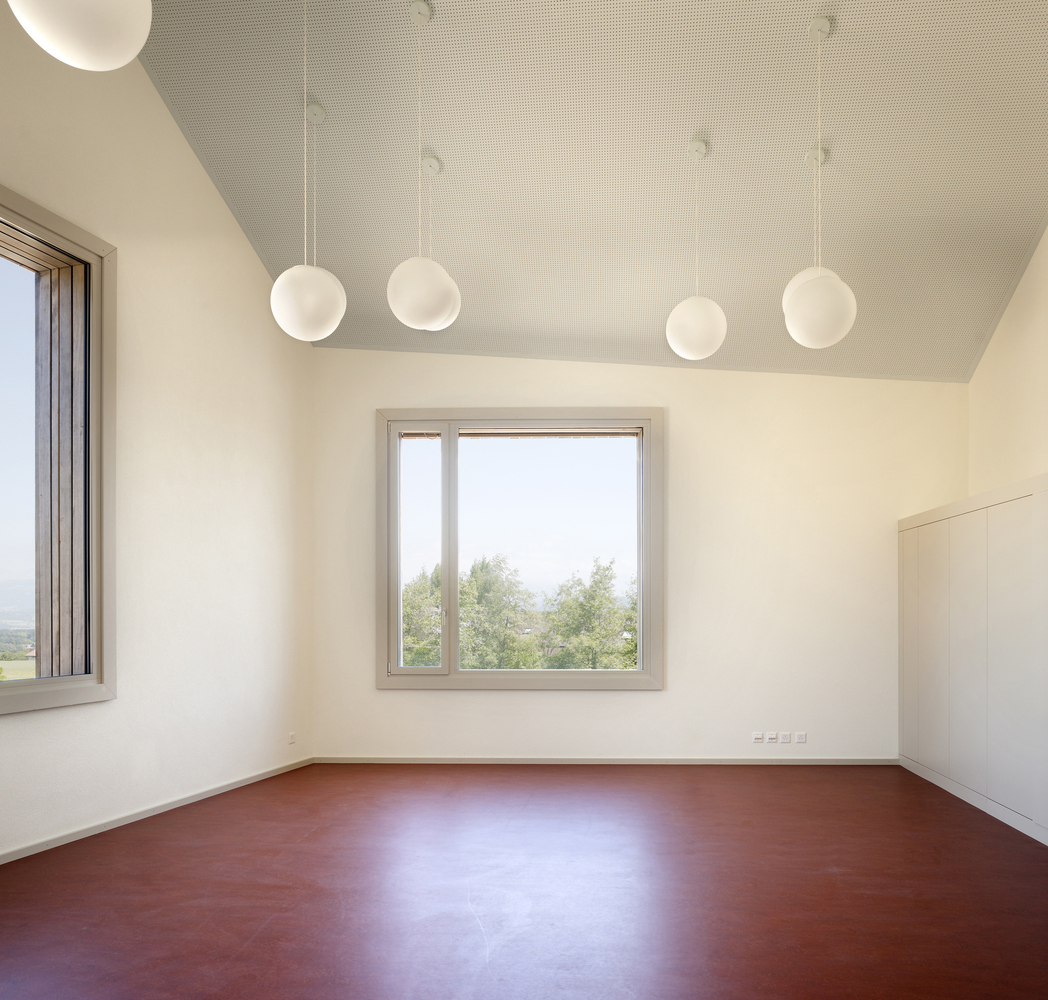
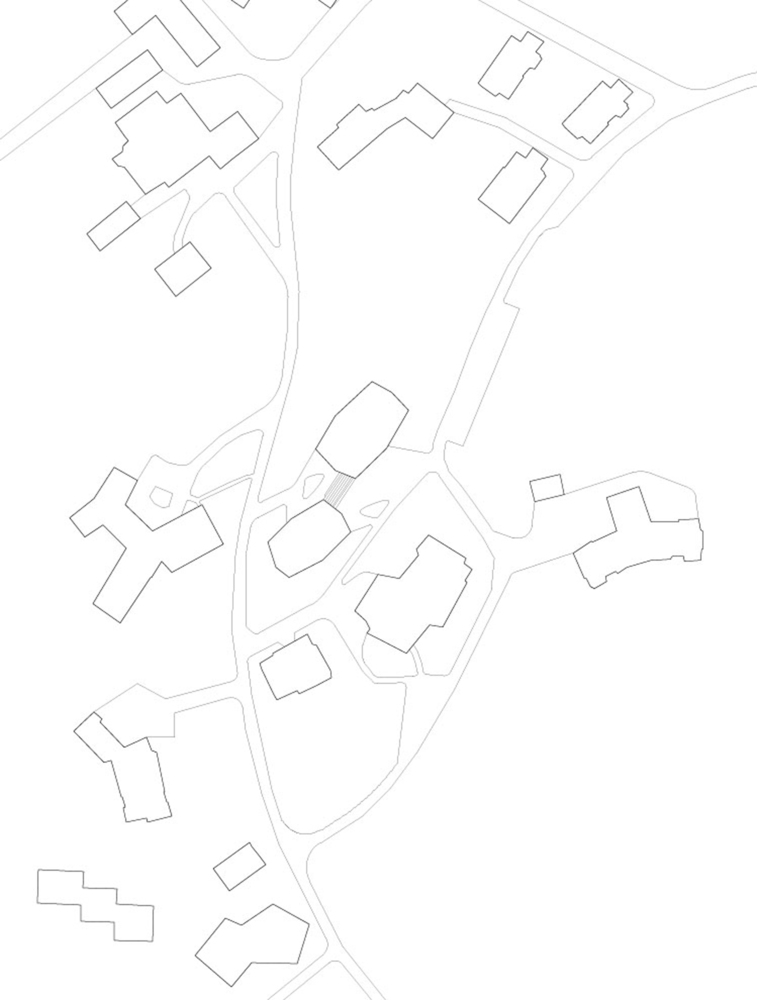


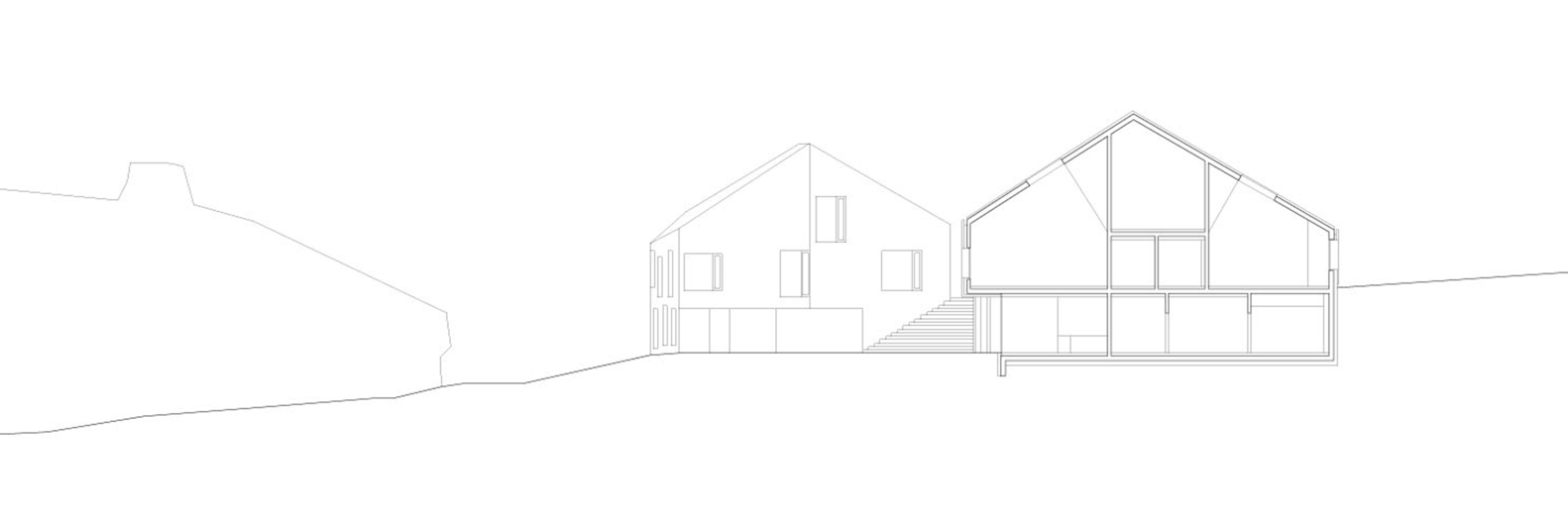
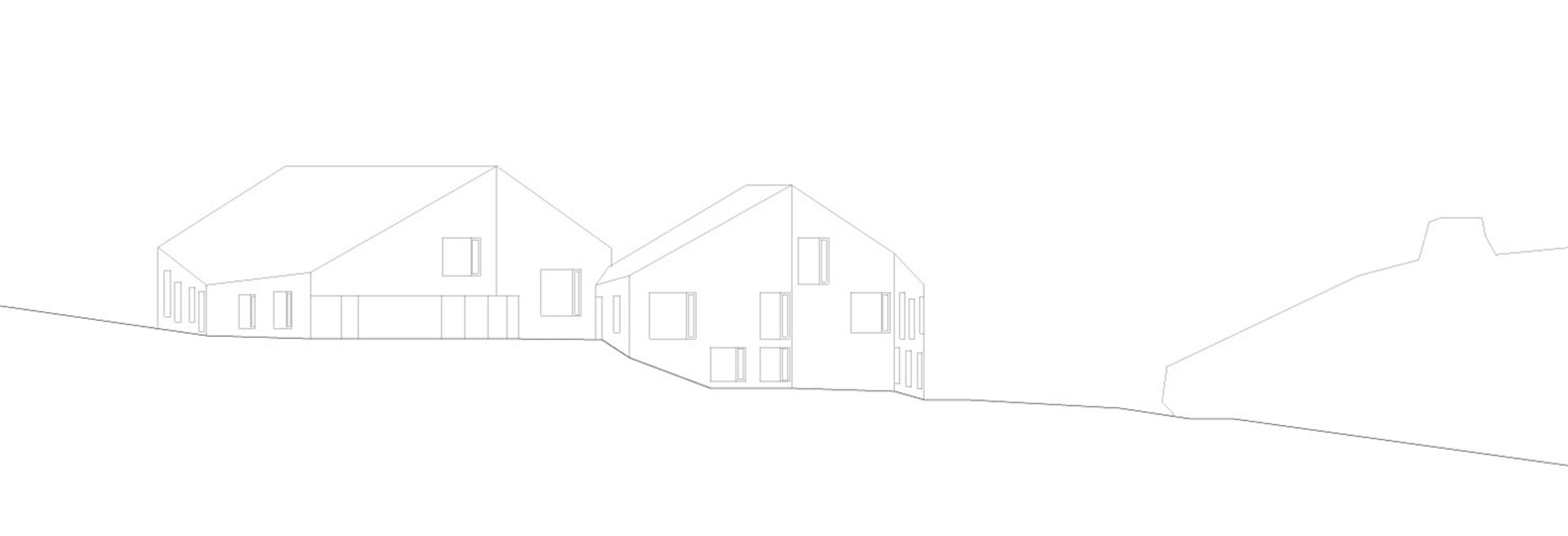
Architects Boegli Kramp Architekten
Location Mollie Margot, 1073 Savigny, Switzerland
Lead Architects Mattias Boegli, Adrian Kramp, Gionata Gianocca
Area 2800.0 m2
Project Year 2010
Photographs Alexander Gempeler
Category Healthcare Architecture
